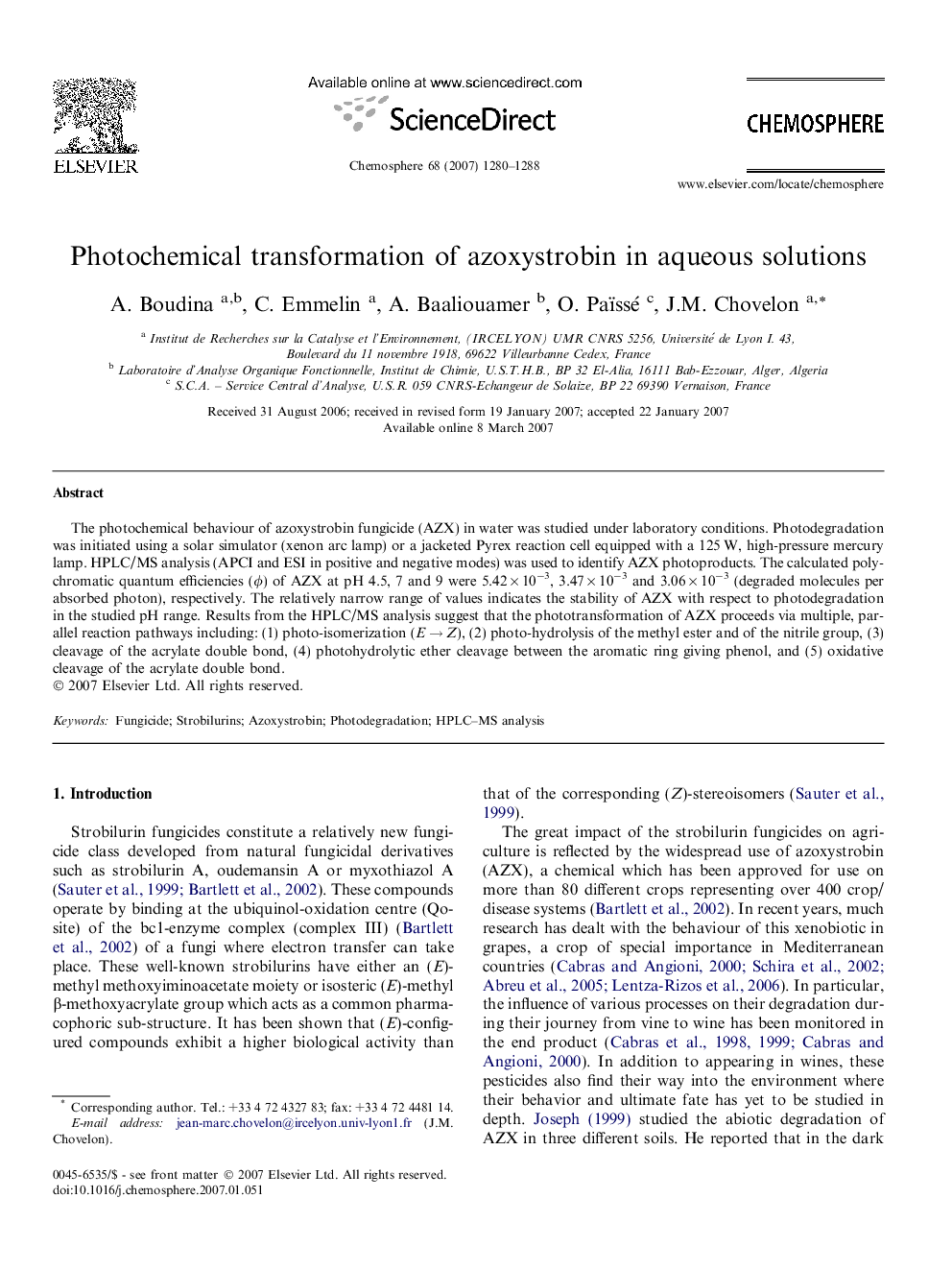| Article ID | Journal | Published Year | Pages | File Type |
|---|---|---|---|---|
| 4414961 | Chemosphere | 2007 | 9 Pages |
The photochemical behaviour of azoxystrobin fungicide (AZX) in water was studied under laboratory conditions. Photodegradation was initiated using a solar simulator (xenon arc lamp) or a jacketed Pyrex reaction cell equipped with a 125 W, high-pressure mercury lamp. HPLC/MS analysis (APCI and ESI in positive and negative modes) was used to identify AZX photoproducts. The calculated polychromatic quantum efficiencies (ϕ) of AZX at pH 4.5, 7 and 9 were 5.42 × 10−3, 3.47 × 10−3 and 3.06 × 10−3 (degraded molecules per absorbed photon), respectively. The relatively narrow range of values indicates the stability of AZX with respect to photodegradation in the studied pH range. Results from the HPLC/MS analysis suggest that the phototransformation of AZX proceeds via multiple, parallel reaction pathways including: (1) photo-isomerization (E → Z), (2) photo-hydrolysis of the methyl ester and of the nitrile group, (3) cleavage of the acrylate double bond, (4) photohydrolytic ether cleavage between the aromatic ring giving phenol, and (5) oxidative cleavage of the acrylate double bond.
